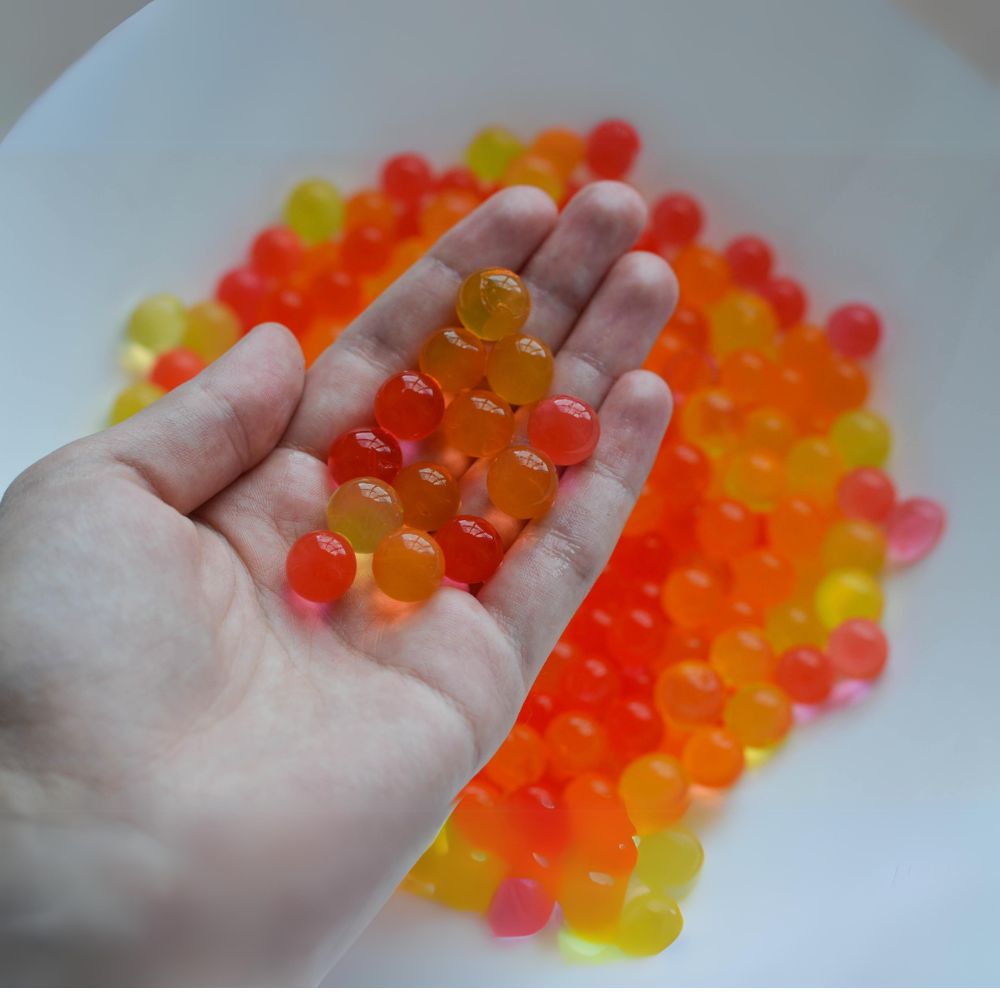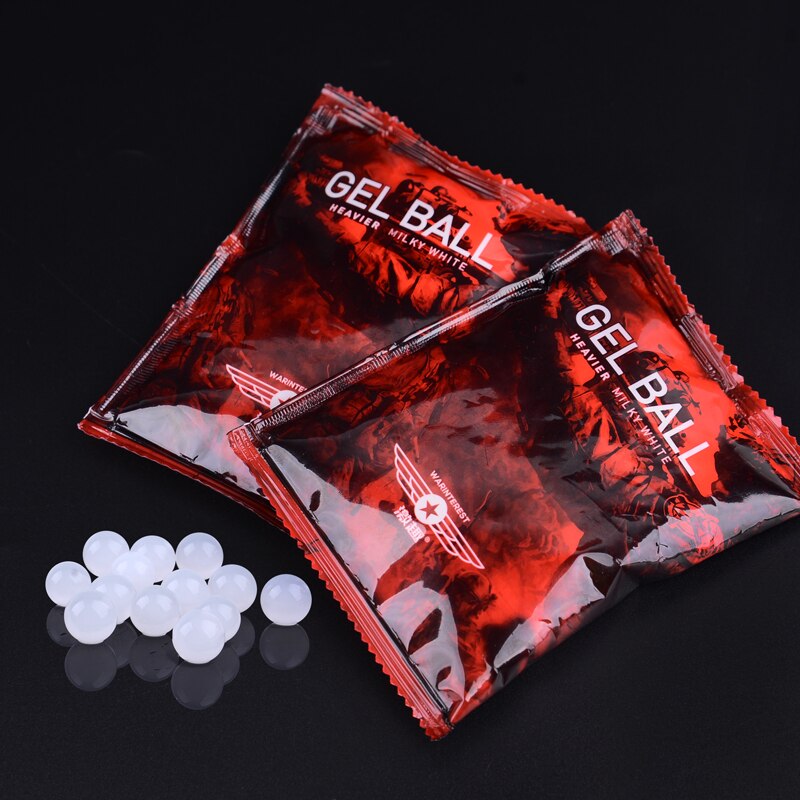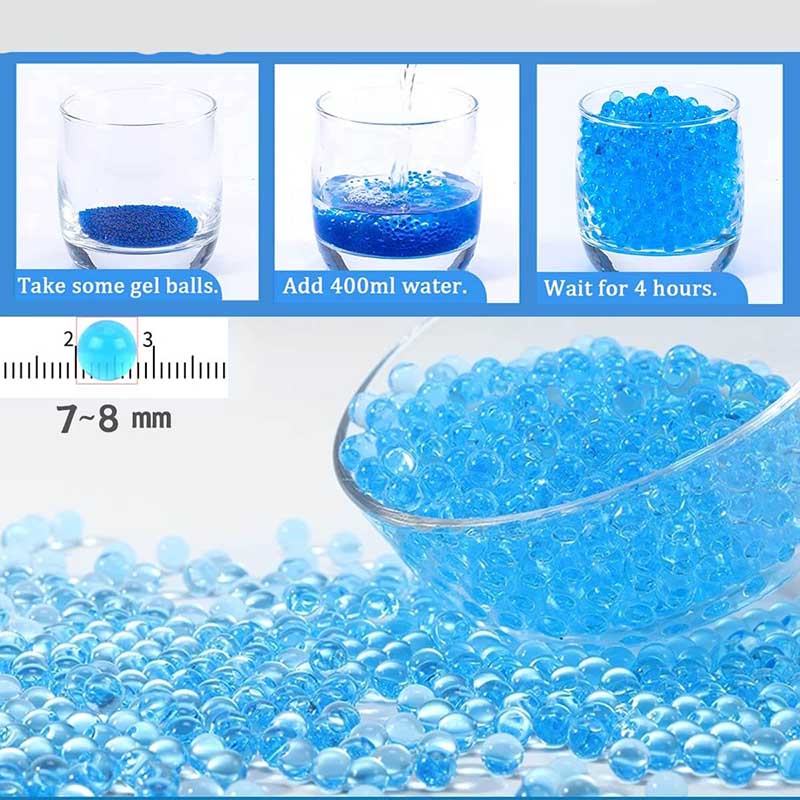how long do gel blaster balls take to grow?

Introduction
As the battle raged on, Alex's gel blaster suddenly clicked empty. Amidst the chaos, he scrambled for spare ammo, realizing the crucial importance of being fully stocked. In the high-stakes world of gel blaster battles, having enough ammunition can make or break a player's chance at victory.
In this article, we explore the process of hydrating gel blaster balls, focusing on understanding how long it takes for them to fully expand.
Delving into the factors influencing hydration time and tips for optimal expansion, we provide insights for enthusiasts looking to maximize their gel blaster experience.
The soaking time for gel blaster balls can vary depending on several factors.

Soaking Time Explained
The Science Behind It
Gel blaster balls operate on a simple yet fascinating principle of superabsorbent polymers (SAP). Comprised of these polymers, the balls possess an innate ability to attract and absorb water molecules. As they soak up water, they undergo a remarkable expansion, swelling significantly in size and transforming into the soft, gel-like projectiles used in gel blaster battles.
Ideal Soaking Time
The typical soaking time for gel blaster balls ranges from 2 to 4 hours. It's crucial to achieve the "perfect" size for optimal performance, usually around 1/4 to 5/16inch (7 to 8 millimeters), ensuring the ideal balance between expansion and consistency for effective gameplay.
Factors Affecting Soaking Time
Dive deeper into the various factors that can influence soaking time:
-
Type of Gel Balls: Different brands or types of gel blaster balls may have varying compositions or densities, affecting how quickly they absorb water and expand. Some balls may require longer soaking times than others to reach the desired size.
-
Water Temperature: The temperature of the water used for soaking can impact the rate of hydration. Warmer water tends to facilitate faster absorption, while colder water may slow down the process. Experimenting with water temperature can help adjust soaking times accordingly.
-
Quality of Water: The quality of the water used, including factors such as hardness or mineral content, can influence how effectively gel blaster balls absorb water. Purified or distilled water may yield more consistent results compared to tap water with varying mineral concentrations.
-
Container Size and Material: The size and material of the container used for soaking can affect the distribution of water and airflow around the gel blaster balls. Larger containers with ample room for the balls to expand may result in faster hydration compared to smaller, crowded containers.
-
Agitation and Stirring: Agitating or stirring the water periodically during soaking can help ensure even distribution of water and promote consistent expansion of the gel blaster balls. This prevents clumping and ensures all balls reach their optimal size.
-
Humidity and Ambient Temperature: Environmental factors such as humidity levels and ambient temperature can also play a role in soaking time. Higher humidity or warmer temperatures may accelerate hydration, while drier or cooler conditions may slow it down.
Signs Your Gel Blaster Balls Are Ready
Visual Cues
Fully hydrated gel blaster balls exhibit distinct visual cues indicating their readiness for use on the battlefield. When hydrated properly, the balls should appear uniformly round, devoid of any wrinkles or irregularities on their surface.

They typically reach a size of around 7 to 8 millimeters in diameter, resembling small, translucent spheres.
Tactile Test
A gentle squeeze of the hydrated gel blaster balls should reveal a soft and slightly firm texture. This tactile test confirms that the balls have absorbed enough water to achieve the desired consistency for optimal performance on the battlefield.
Optimizing Soaking Time for Best Results
Preparation Tips
When preparing the soaking container for gel blaster balls, it's essential to ensure it is large enough to hold the balls comfortably without overcrowding.
This allows for proper water circulation and ensures that each ball has sufficient space to expand evenly during hydration.
Additionally, selecting a clean and sanitized container helps prevent contamination and maintains the integrity of the gel balls.
Consider using a container with a lid to minimize evaporation and maintain consistent water temperature throughout the soaking process.
By following these preparation tips, you can optimize the hydration process and achieve the desired size and consistency for your gel blaster balls. Offer advice on preparing the soaking container.
It should be large enough to hold the gel balls comfortably without overcrowding.
The Soaking Process: step-by-step guide

- Measuring the appropriate amount of water based on the quantity of gel blaster balls: Use a ratio of approximately 1 liter (or 1000 milliliters) of water per 10 grams of dry gel blaster balls. This ratio ensures that the balls have enough water to fully hydrate and expand to the desired size.
- Pouring the gel blaster balls into the container and adding water: Submerge the dry gel blaster balls in the measured water, ensuring that they are fully covered and have room to expand. Avoid adding too much water, as excess water may dilute the solution and prolong the soaking time.
- Stirring the mixture occasionally to ensure even water distribution: Depending on the initial expansion of the gel blaster balls and their absorption rate, you may need to adjust the amount of water accordingly. Monitor the hydration process closely and add more water if necessary to maintain optimal conditions.
Troubleshooting Tips - Soaking Issues
Under-hydrated Balls
If your gel blaster balls haven't fully absorbed water after the recommended soaking time, there are a few steps you can take to encourage hydration:
-
Extended Soaking: Consider soaking the gel blaster balls for a bit longer to allow additional time for hydration. Sometimes, certain types of gel balls or environmental factors may require a longer soaking period to reach their optimal size.
-
Warmer Water: If you haven't already used warm water, consider switching to warmer water for soaking. Warmer temperatures can help accelerate the hydration process by increasing the rate of water absorption.
-
Agitation: Gently agitating or stirring the water and gel blaster balls can promote better water circulation and encourage more even hydration. This can help ensure that all the balls have access to water and expand uniformly.
Conclusion
In conclusion, understanding the soaking process for gel blaster balls is essential for maximizing their performance on the battlefield.
By considering factors such as water temperature, container size, and hydration indicators, enthusiasts can achieve optimal results. With proper preparation and troubleshooting techniques, players can ensure that their gel blaster balls are consistently hydrated and ready for action.
So, whether you're gearing up for your next gel blaster battle or fine-tuning your hydration technique, these insights will help elevate your gameplay experience.





